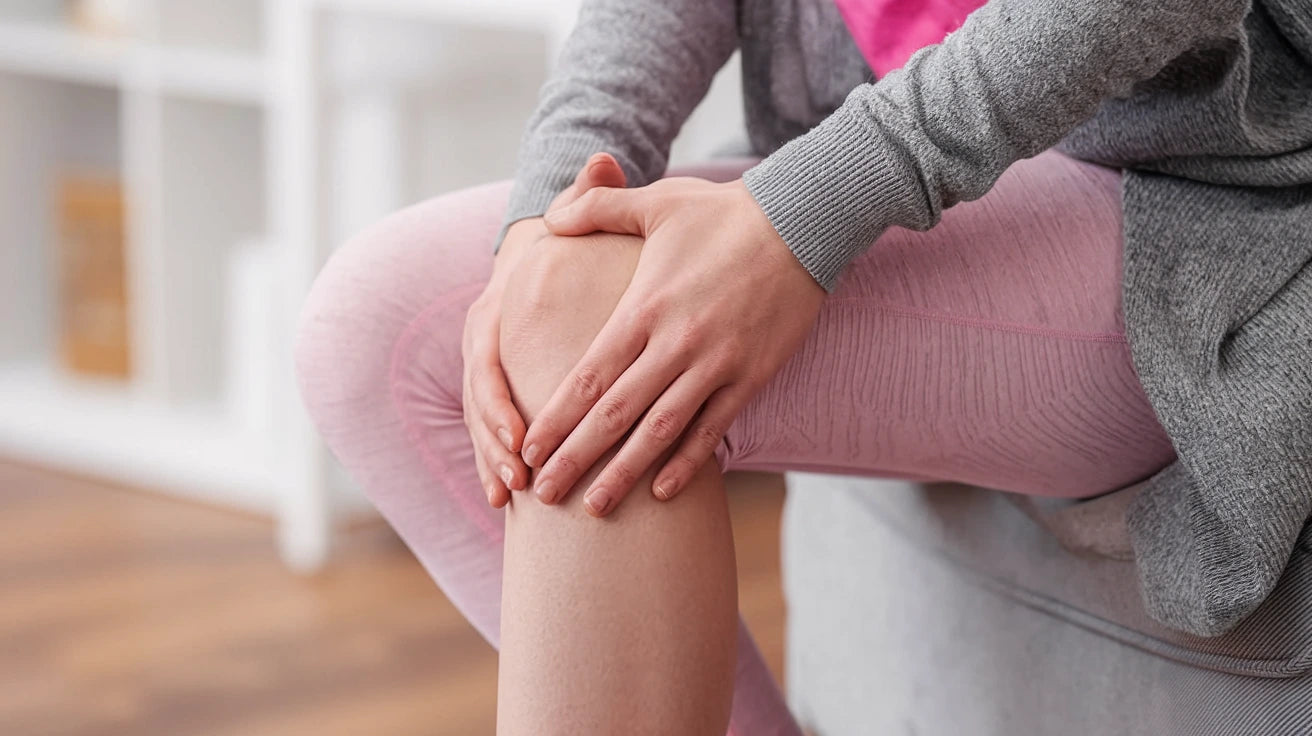Rheumatism in the Knee: Symptoms, Treatment, and Relief

Rheumatoid arthritis of the knee, also known as rheumatoid arthritis (RA) of the knee joint, is an inflammatory rheumatic disease that can cause significant pain, inflammation, and limited mobility. This article provides an overview of common knee rheumatism symptoms and causes , treatment options, and how specially designed aids can help relieve discomfort for people with knee rheumatism.
Common symptoms of rheumatism in the knee
Rheumatoid arthritis in the knee joint can cause several different symptoms:
- Pain and tenderness in the knee joint, especially with strain or movement
- Swelling and warmth around the knee when the joint becomes inflamed
- Morning stiffness that often lasts for over 30 minutes
- Reduced mobility in the knee joint
- Fatigue and general feeling of illness
- In some cases, the knee may feel unstable or "give way"
It is important to note that symptoms can vary in intensity and can come in flare-ups. For many people, rheumatism spreads to several joints in the body, not just the knee. If you suspect rheumatism in the knee, you should see a doctor who can refer you to a specialist. Other conditions such as unstable knees can have similar symptoms.
Causes and risk factors
Rheumatoid arthritis is an autoimmune disease in which the body's immune system attacks the joints, causing inflammation that damages the joint cartilage. The exact cause is not fully understood, but several factors may increase the risk:
- Genetic factors and heredity play an important role
- Environmental factors, such as smoking, can worsen the disease
- Hormonal changes can affect inflammation
- Infections (can trigger the disease in genetically predisposed individuals)
Rheumatism knee should not be confused with osteoarthritis of the knee , although both conditions can affect the knee joint and cause similar symptoms. Rheumatism is an inflammatory process while osteoarthritis is a wear and tear of the joint cartilage.
Diagnosis and treatment
Early diagnosis and treatment are crucial to prevent joint damage and maintain mobility. Diagnosis is usually made through a combination of:
- Physical examination of the joints
- Blood tests to detect inflammation markers
- X-ray or MRI to assess joint damage
The treatment of rheumatoid arthritis of the knee is often multidisciplinary and may include:
- Medical treatment with anti-inflammatory drugs and disease-modifying antirheumatic drugs (DMARDs)
- Physiotherapy to maintain mobility and strengthen the muscles around the joint
- In some cases, cortisone injections may be given for quick pain relief.
- Lifestyle changes, such as weight loss if necessary and adapted exercise
A physiotherapist can be very helpful in designing exercises that strengthen the muscles around the knee without exacerbating the discomfort from the inflamed joint. In cases of long-term pain , bursitis in the knee may also need to be ruled out.

Relief with specially designed aids
In addition to medical treatment, specially designed aids can help relieve symptoms and improve the quality of life for people with rheumatism in the knee.
KneeComfort™
KnäKomforten™ from Komforten is an innovative knee protector that offers several benefits for people with rheumatic knees:
- Relieves knee joint pressure through advanced compression technology
- Increases blood circulation to promote healing and reduce inflammation
- Provides support during daily activities and light exercise
- Can contribute to reduced pain and increased stability in the knee
- Helps reduce knee stiffness, especially after periods of inactivity
Conclusion
Rheumatism of the knee is a complex disease that requires professional medical care. The right treatment can reduce inflammation and slow the progression of the disease. At the same time, the use of specially designed aids such as KnäKomforten™ and Termoreliever™ can play an important role in the daily management of symptoms. It is important to remember that these products should be used as a complement to, not a substitute for, medical treatment.
By combining the right medical care, medications, lifestyle adjustments and supportive aids, many people with rheumatism in the knee can significantly improve their situation and maintain an active lifestyle despite the discomfort – even with conditions such as swollen knees .
Frequently Asked Questions (FAQ)
Can rheumatism in the knee be cured?
Rheumatoid arthritis cannot be completely cured, but with the right treatment, the disease can often be effectively controlled and many people live active lives.
How quickly can I expect results when using Knee Comfort™?
Many users report an immediate feeling of support and some pain relief. For long-term results, regular use in combination with medical treatment is recommended.
Can I use Termoreliever™ together with other treatments?
Yes, Termoreliever™ can often be used as a complement to other treatments. However, always consult your doctor before introducing new treatment methods.

